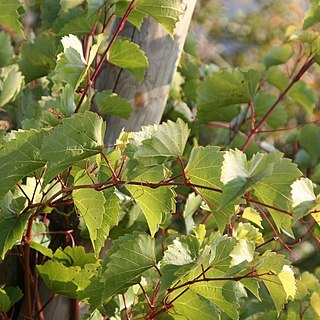Rarely climbing, the stems prostrate or ascending or merely reclining on bushes; tendrils commonly none, or a few produced opposite the uppermost lvs only; lvs firm, paler beneath, often ± folded, reniform to depressed-ovate, 5–10 cm, somewhat wider, unlobed, coarsely toothed, with a broad basal sinus, glabrous on both sides or sparsely hairy along the larger veins; infls small, rarely to 10 cm; fr 6–10 mm, black; 2n=38. Dry hills and rocks; s. Ill. to Okla., s. to Tenn., Ark., and Tex.; also se. Pa., where perhaps only escaped.

